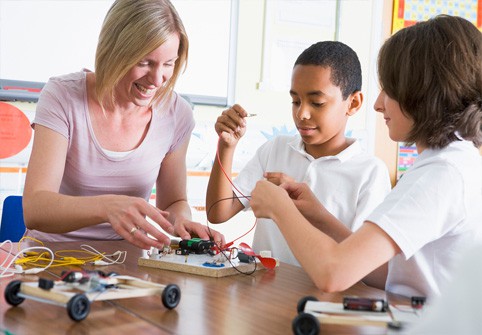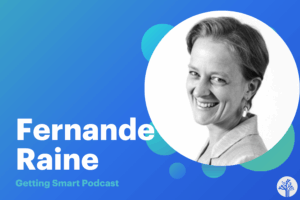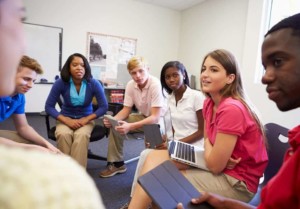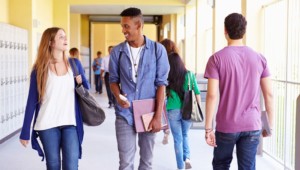Change the space, change the program, expect high outcomes

Stephen Harris directs the Sydney Centre for Innovation in Learning (@scil). It is the research, creativity and development unit of Northern Beaches Christian School, a mixed socioeconomic K-12 serving 1300 students.
A school with an R&D center requires a double take. A few minutes with Stephen will also stop you in your tracks. He’s one of the most thinkers and designers of learning facilities I’ve run into. Here’s part of a recent blog called Redesigning space for learning:
Our experience has been that change comes from these key elements:
- Redesign spaces around collaborative teaching
- Retrain teachers to work collaboratively
- Empower and resource teachers to be the agents of change in any context
As a result the learning experience changes rapidly – leading to improved academic outcomes, greater alignment with the skills that will be valuable in post-school contexts and a far more obvious and positive culture of engaged learning will be evident.
We have learnt that space is both a fixed and fluid notion. It has an enormous impact on how we feel and think – the very core of our experiences of life. The challenge for schools is to identify the different spaces it inhabits – virtual, pedagogic and real, and to draw these together in meaningful ways so that learning can focus forward, enabled through technology.
NBCS has created some new spaces for learning:
- The flowing ‘nooks and crannies’ of the SCIL building
- Design and Production suites of the Undercroft
- Multimodal agile spaces of the Marina Prior Centre for the Performing Arts
Designing new space is one thing but breaking down old walls and old habits is another. NBCS is creating ‘The Marketplace” a glass canopy covering social and learning space and breaking down any concept of separate classrooms. “The Marketplace is an active glass canopy positioned over old spaces in order to radically transform the heart of the original school from industrial-era design to agile spaces suited to community life, engaged learning and enhanced through mobile technologies.”
Stephen models action research, “We learn by doing – and if schools wish to transform, then they need to adopt this philosophy in tangible ways.”
Harris is insightful about change. “No longer is it 20th century ‘push’ for change, rather 21st century teachers are ‘pulling’ in the new paradigm. Our role as educational leaders becomes one of facilitating new ways of learning.”
The remod includes The Zone—a space and a project. About 180 10-12 year olds work with a team of 6 teachers. “Learning is differentiated to the needs of every learner, every day, in a personalized process that tracks individual development.” A day in the Zone involves sustained focus on:
The benefits are well captured in this equation:
180 students + 6 teachers + one agile space + collaborative learning + BYOD (bring your own device) = engaged learners + zero behavior issues.
Here’s Stephen’s philosophy in a nutshell: change the space, change the program, expect high outcomes. The formula: do, then think!







0 Comments
Leave a Comment
Your email address will not be published. All fields are required.